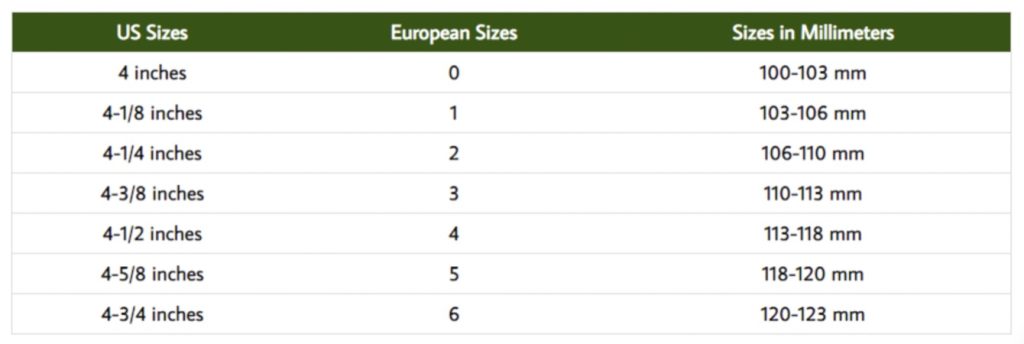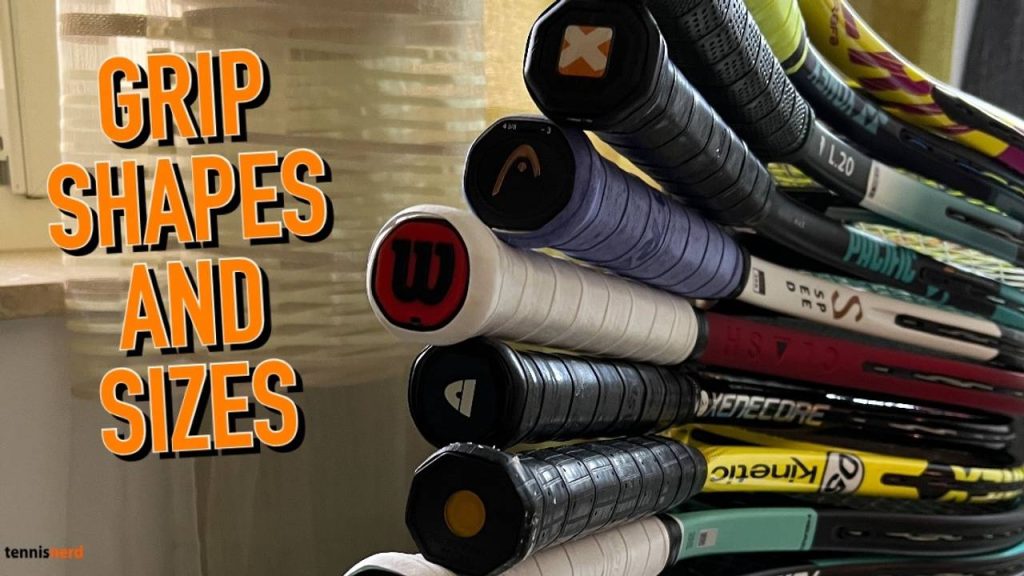Racquet grip shapes and sizes are something you need to consider when choosing a tennis racquet. Most players underestimate how important your grip is. It influences how comfortable you feel, how relaxed you can hold the racquet, how easy it is to find the proper grip for each stroke etc.
Of course, the size and shape of your grip are highly personal. And to make it worse, different tennis brands offer different shapes and sizes. They’re all octagonal, but there is no standard grip size and shape besides that. Grip sizes go from 0-5, where five is the thickest and 0 is for kids.
What we have here is a similar situation to the shoe industry. There are somewhat standardized sizes and shapes, but there are apparent differences. Babolat and Yonex grips tend to be slightly thicker than other brands despite having the same grip size. With Babolat, Yonex and Tecnifibre racquets, I tend to go down a size to 2, while with the rest I’m fine with a 3. You need to feel what works for you.
Grip shapes

The grip shape A is most commonly used and is what Wilson, Yonex, Babolat and HEAD is doing. The top and bottom bevels are a bit longer.
Grip shape B in the diagram is called »flat-topped« and is the traditional HEAD-grip style before moving over all their series to A-shaped TK82S pallet. Tecnifibre and ProKennex uses this type of grip shape.
The C-shape is even-sided and is what Prince uses.
The grip shape is, like the size, a matter of personal taste. If you feel comfortable with a grip, stick with it. That’s why it’s common practice for professional players to have custom made handles when they switch racket manufacturers. It might be smaller or bigger than what you perhaps should use based on your hand size, but it depends on many things. Nadal is 1.85 and uses grip 2, for example, to get more whip with the wrist.
My grip size is generally L3, but on Babolat and Yonex racquets, I tend to go for L2, and it is more comfortable for me to use an L2 with any brand than an L4.
Tip When Selecting Tennis Racquet Grip Size

If you want a 2,5 grip, for example, and don’t want to go to a professional customizer to get your grip done to your specifications (can be expensive), go for the smaller one. It is much easier to make a grip larger with over-grips, tape, or thicker regular grips than making it smaller.
Don’t go for too small of a grip because it can lead to you using more unnatural force to squeeze-hold the handle. A larger grip than average will also restrict your motions. You should be able to grip and swing your racquet in a relaxed way.
The essential advice I can give regarding grip shapes is to use what feels comfortable and stick to it!

